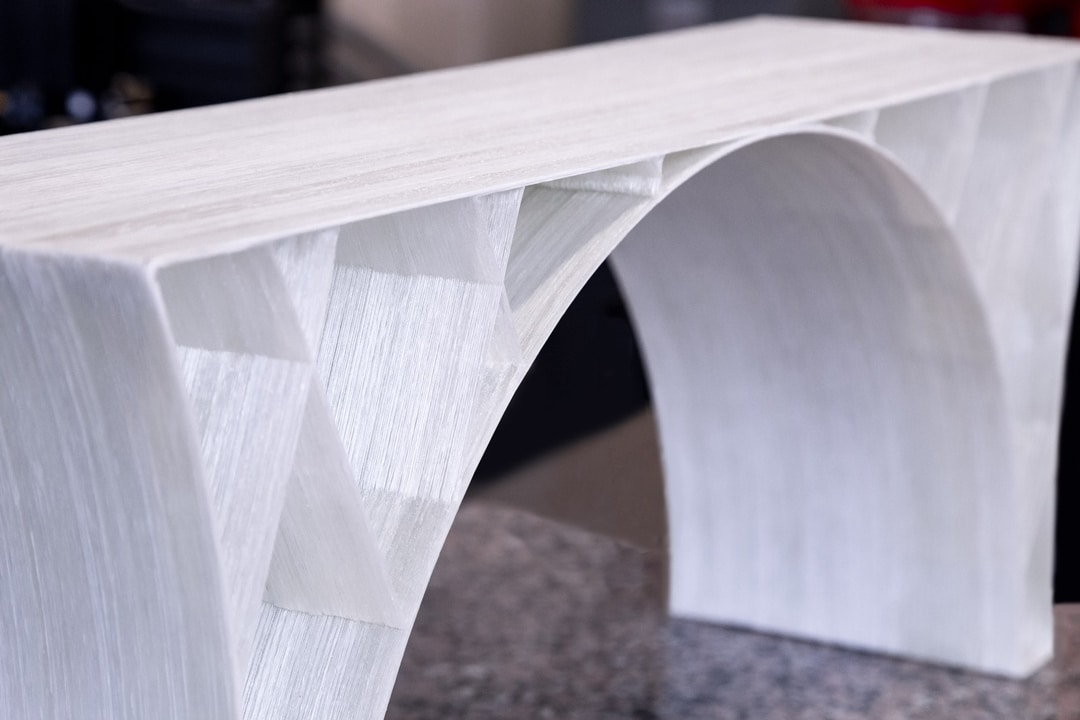- Continuous Fiber 3D Printing Technology (CF3D®) offers a great composite 3D printing solution.

Composite 3D printing is a very young but a rapidly growing field. It holds immense potential for the new age products and systems. Composites basically consists of a base polymer material reinforced with a high-performance fiber material (either chopped or as a fiber strand). These composites offer superior strength and stiffness compared to regular polymer materials.
Due to its superior performance, it has applications in critical sectors like aerospace, automotive, oil and gas and others.
However, creating and using composites is not as simple as it sounds. Traditionally it has been quite difficult to use composites. But with 3D printing, the composites are being revisited and now with specific composite 3D printing technologies, the focus is back on composites.
Through this article, let us see one such composite 3D printing technology.
Prevalent Composite 3D printing Technologies
Prevalent composites use chopped fiber particles mixed with regular base materials like PLA (in case of material extrusion technology). The mixture, though it exhibits better mechanical properties, still cannot be called pure composite printing. The reason for this is that the chopped fiber strands are very minute and the individual particles do not overlap to provide a true fiber strength. They do not even cross adjoining layers thereby not helping the adjacent layers to get strong.
Continuous Fiber Composite 3D printing Technology (CF3D®)

Continuous Fiber 3D Printing Technology (CF3D®) is a patented composite 3D printing technology of Continuous Composites. Continuous Composites holds the world’s earliest patents (2012) on printing with continuous fibers. The proprietary technology has the capability to rapidly manufacture fiber integrated 3D printed parts unlike many of the prevalent composite manufacturing technologies.
CF3D end effectors print continuous fibers in both single-channel and multi-channel configurations. Handling the material from start to finish, the end effectors impregnate the fibers in-situ and cure the fiber + resin combination instantly upon extrusion. CF3D is motion platform agnostic with scalable hardware solutions on both robots and gantries. Continuous Composites is re-engineering the bridge between the digital and physical worlds.
The Continuous Fiber 3D Printing Process
The Continuous Fiber 3D Printing Technology uses a snap-cure thermoset (also compatible with thermoplastics) resins. The CF3D impregnates the reinforcing fiber within the printhead and cures (hardens) the composite immediately after material deposition. The thermoset materials enable the process to perform high-speed printing unsupported in free space. CF3D achieves 50-60 percent fiber volume.
Some of the most significant recent developments include more automated toolpath generation, automated tool changing to enable high-resolution single-channel and high-deposition multi-channel printing on the same part, improved accuracy and precision of robots, and development of materials with greater mechanical properties.
Software Solution

Continuous Composites has also developed a software solution to operate the Continuous Fiber 3D Printing technology. CF3D software takes a part through its complete lifecycle to revolutionize your design based on material properties, physical analysis, and actual use cases. Manufacturing possibilities are brought to life with CF3D’s ability to utilize all the degrees of freedom represented in 3D space. Your invitation to create awaits.
Materials

High-performance, lightweight, composite 3D printing materials elevate the technology to a new level of performance and functionality. The Composite 3D printing materials by the company are tailorable and flexible to the user’s unique applications with CF3D.
This technology is reaching new heights with the ability to print both structural fibers (e.g., carbon, glass, aramid) and functional fibers (e.g., optical, metallic) in a single-step process. Users can print sensing capabilities, electrical circuits, and embedded heat directly into the structure. CF3D provides the foundation for the most innovative material solutions in manufacturing.
Advantages

Continuous Fiber 3D Printing is an automated process that leverages the true anisotropic properties of a continuous fiber by discretely printing in the direction of the load conditions. Continuous Composites eliminates the need for moulds, ovens, and autoclaves, resulting in high material yield. The benefits of CF3D lead to exponentially lower costs of a finished composite part and can be scaled up for large components, or down for small composite parts.
CF3D exhibits superior strength to weight ratio, it offers a mould-less manufacturing experiences, it is a rapid automated process. Being a 3D printing process, the design freedom is limited by the imagination of the designer with no limit to the amount of functionality embedded into the product.
It is superior to prevalent composite 3D printing solutions where only chopped fiber strands are randomly added to the base material and thus the output is far better than its competitors.
Superior Patent Portfolio
As mentioned earlier, Continuous Composites holds the world’s earliest patents on printing with continuous fibers. Continuous Composites is an established leader of innovation in additive manufacturing using composites.
Till date, Continuous Composites holds 44 Granted U.S. Patents, 30 U.S. Provisional Applications, 128 U.S Non-Provisional Applications, 61 International PCT Applications and 25 Granted International Patents.
About Manufactur3D Magazine: Manufactur3D is an online magazine on 3D printing. which publishes the latest 3D printing news, insights and analysis from all around the world. Visit our 3D Printing Education page to read more such informative articles. To stay up-to-date about the latest happenings in the 3D printing world, like us on Facebook or follow us on LinkedIn.



